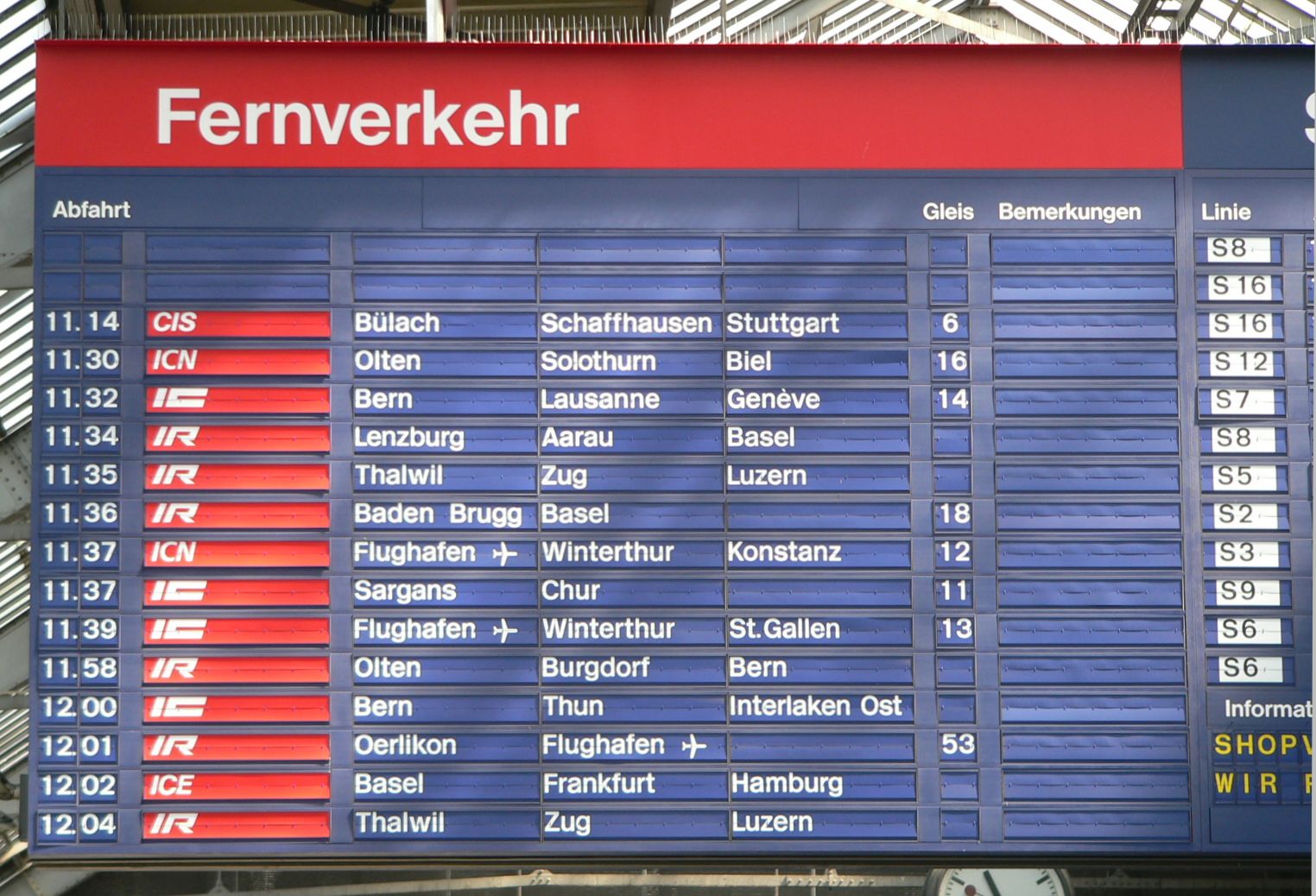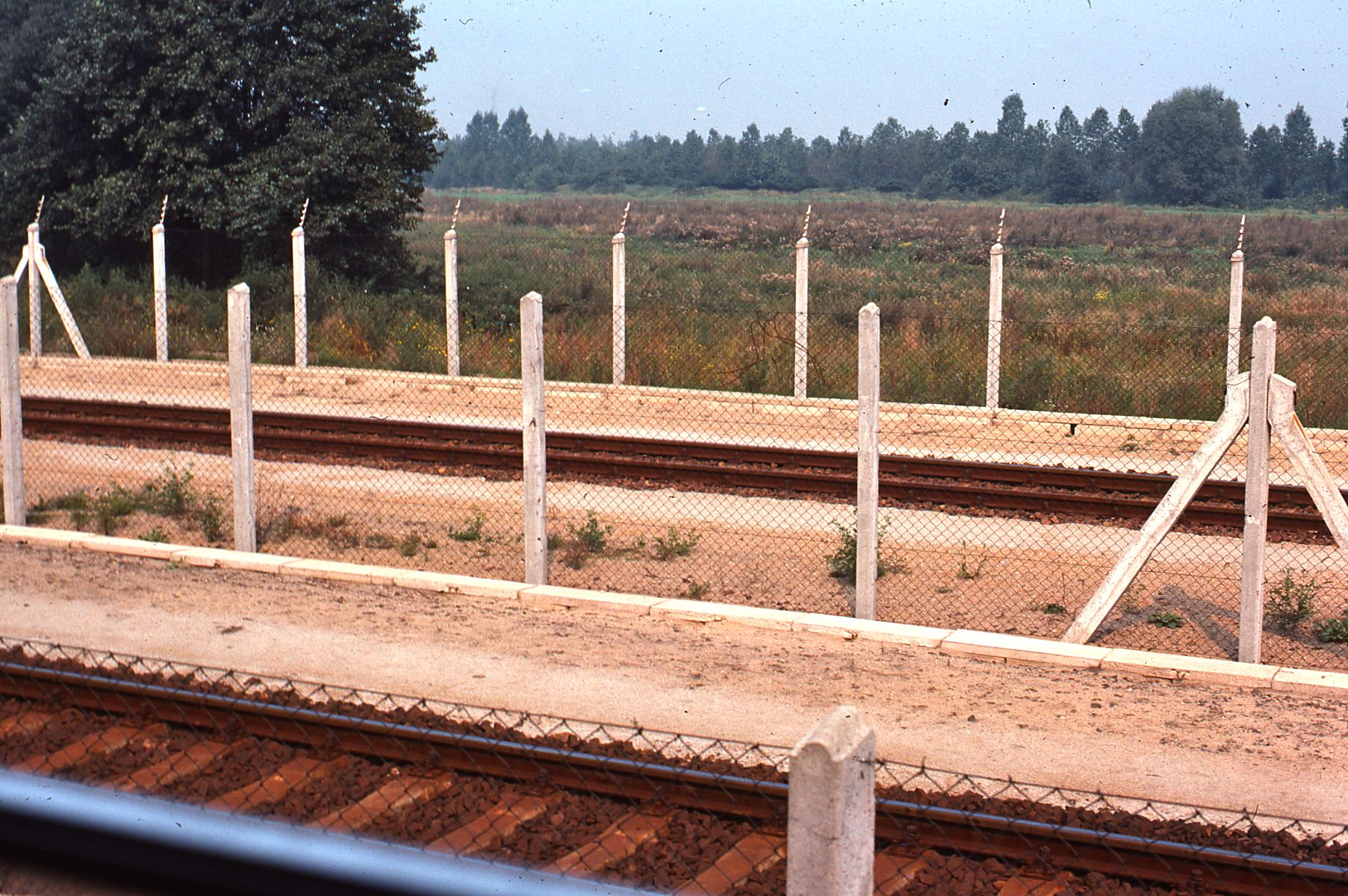|
InterCity
InterCity (commonly abbreviated ''IC'' on timetables and tickets) is the train categories in Europe, classification applied to certain long-distance passenger train services in Europe. Such trains (in contrast to InterRegio, regional train, regional, local, or commuter trains) generally call at major railway station, stations only. An international variant of the InterCity trains are the EuroCity (EC) trains, which consist of high-standard coaches and are run by a variety of operators. History The Inter-City Rapid Transit Company was an Ohio interurban company, which began operations in 1930 as it had purchased its route from the Northern Ohio Traction & Light Company. It remained in operation till 1940. The use of ''Inter-City'' was reborn in the United Kingdom: A daily The Inter-City, train of that name was introduced in 1950, running between the cities of London and Birmingham. This usage can claim to be the origin of all later usages worldwide. In 1966 British Rail i ... [...More Info...] [...Related Items...] OR: [Wikipedia] [Google] [Baidu] |
InterCity (British Rail)
InterCity (or, in the earliest days, the hyphenated Inter-City) was a brand name introduced by British Rail in 1966 for its long-haul express passenger services (see British Rail brand names for a full history). In 1982, the British Railways Board divided its operations into a number of sectors ( sectorisation). The sector responsible for long-distance express trains assumed the brand-name InterCity, although many routes that were previously operated as InterCity services were assigned to other sectors (e.g. London to King's Lynn services were transferred to the commuter sector Network SouthEast). InterCity brand Etymology InterCity derives from the prepositional of the with ''City'' giving rise to meaning ''between cities''. The Inter-City train British Rail first used the term ''Inter-City'' in 1950 as the name of a train running between London Paddington and Wolverhampton Low Level. This was part of an overall policy of introducing new train names in the post Worl ... [...More Info...] [...Related Items...] OR: [Wikipedia] [Google] [Baidu] |
Train Categories In Europe
In Rail transport in Europe, Europe, railway companies assign trains to different categories or train types depending on their role, i.e. based on the used rolling stock, their speed (high-speed rail, high-speed, higher-speed rail, higher-speed, conventional), distance of travel (long, medium, short), stopping frequency (Inter-city rail, Inter-city, limited express, Express train, express, limited-stop, Regional rail, regional, Commuter rail, commuter) and other criteria. Train categories/types often have specific abbreviations (e.g. InterCity, IC). In addition, different lines or individual trains may be numbered. The abbreviations (and numbers) are usually indicated in Public transport timetable, timetables, passenger information systems and sometimes also on the destination sign of the train. There is no common classification scheme throughout Europe; each country has its own, although categories of internationally operating trains are used across borders (e.g. EuroCity, EC). ... [...More Info...] [...Related Items...] OR: [Wikipedia] [Google] [Baidu] |
British Rail
British Railways (BR), which from 1965 traded as British Rail, was a state-owned company that operated most rail transport in Great Britain from 1948 to 1997. Originally a trading brand of the Railway Executive of the British Transport Commission, it became an independent statutory corporation in January 1963, when it was formally renamed the British Railways Board. British Railways was formed on 1 January 1948 as a result of the Transport Act 1947, which nationalised the Big Four British railway companies along with some other (but not all) smaller railways. Profitability of the railways became a pressing concern during the 1950s, leading to multiple efforts to bolster performance, including some line closures. The 1955 Modernisation Plan formally directed a process of dieselisation and electrification to take place; accordingly, steam locomotives had been entirely replaced by diesel and electric traction (except for the narrow-gauge Vale of Rheidol Railway tourist lin ... [...More Info...] [...Related Items...] OR: [Wikipedia] [Google] [Baidu] |
Swiss Federal Railways
Swiss Federal Railways (, SBB; , CFF; , FFS) is the national railway company of Switzerland. The company was founded in 1902 and is headquartered in Bern. It used to be a State-owned enterprise, government institution, but since 1999 it has been a special stock corporation whose shares are held by the Swiss Confederation and the Cantons of Switzerland, Swiss cantons. It is the largest rail and transport company of Switzerland; it operates on most standard gauge lines of the Rail transport in Switzerland, Swiss railway network. It also heavily collaborates with most other transport companies of the country, such as the BLS AG, BLS, one of its main competitors, or (SOB), to provide fully integrated public transport timetable, timetables with Clock-face scheduling, cyclic schedules. SBB was ranked first among national Rail transport in Europe, European rail systems in the 2017 European Railway Performance Index for its intensity of use, quality of service, and safety rating. Whil ... [...More Info...] [...Related Items...] OR: [Wikipedia] [Google] [Baidu] |
InterRegio
The InterRegio, often shortened to IR, is a train categories in Europe, train category for mainly domestic train services in use in some European countries, with Swiss Federal Railways operating the most dense network. InterRegio trains are semi-fast long-distance trains with more stops and usually lower prices than more upscale long-distance trains such as the InterCity (IC). Denmark The InterRegio system was also introduced to the Danish railways in the early 1990s and became an alternative to the InterCity services, with no seat reservation required. However, unlike other countries, InterRegio trains in Denmark only operates on Fridays and Sundays, to support the heavy flow of passengers that travel on those days. These InterRegio services also have fewer stops than the InterCity services, which goes against the original InterRegio concept of long-distance trains with more local stops. There are no specific rules for the composition for these trains, and both old and new mater ... [...More Info...] [...Related Items...] OR: [Wikipedia] [Google] [Baidu] |
EuroCity
EuroCity (EC) is an international Train categories in Europe, train category and brand for European inter-city rail, inter-city trains that cross international borders and meet criteria covering comfort, speed, food service, and cleanliness. Each EC train is operated by more than one European Union or Swiss rail company, under a multilateral co-operative arrangement, and all EC trains link important European cities with each other. The EuroCity label replaced the older Trans Europ Express (TEE) name for border-crossing trains in Europe. Whereas TEE services were first class travel, first-class only, EuroCity trains convey first- and second-class coaches. Criteria The criteria EuroCity trains are required to meet include the following: * train through two or more countries * all cars air-conditioned * stop only at stations serving major cities * stops scheduled to last no more than five minutes, in special cases up to 15 minutes * food and beverages available onboard (prefe ... [...More Info...] [...Related Items...] OR: [Wikipedia] [Google] [Baidu] |
Regional Train
Regional rail is a public rail transport service that operates between towns and cities. These trains operate with more stops than inter-city rail, and unlike commuter rail, operate beyond the limits of urban areas, connecting smaller cities and towns. In North America (e.g. the United States), "regional rail" is often used as a synonym for "commuter rail", often using "commuter rail" to refer to systems that primarily or only offer service during rush hour while using "regional rail" to refer to systems that offer all-day service. In Europe, regional trains have their own category, often abbreviated to R ( RB in Germany) or L (for local train). Characteristics Regional rail provides services that link settlements to each other, unlike commuter rail which links locations within a singular urban area. Unlike inter-city services, regional trains stop at more stations and serve smaller communities. They may share routes with inter-city services, providing service to settlements ... [...More Info...] [...Related Items...] OR: [Wikipedia] [Google] [Baidu] |
Trans Europ Express
The Trans Europ Express, or Trans-Europe Express (TEE), was an international first-class railway service in western and central Europe that was founded in 1957 and ceased in 1995. At the height of its operations, in 1974, the TEE network comprised 45 trains, connecting 130 different cities,Haydock, David (June–July 1996). "The Second Demise of the TEE". ''Today's Railways Europe, Today's Railways'', p. 22–24. Platform 5 Publishing (UK). . from Spain in the west to Austria in the east, and from Denmark to Southern Italy. Origin The first services commenced on 2 June 1957 following an idea of F.Q. den Hollander, then president-director of the Dutch national railway company (Nederlandse Spoorwegen, NS).60 Years On: What's Left of the TEE ''Today's Railways Europe'' issue 264 December 2017 pages 28-33 TEE was a network jointly operated by the railways of West Germany (Deutsche Bundesbahn, DB), France (SNCF), Switzerland (Swiss Federal Railways, SBB-CFF-FFS), Italy (Ferrovie dell ... [...More Info...] [...Related Items...] OR: [Wikipedia] [Google] [Baidu] |
F-Zug
A ''Schnellzug'' is an express train in German-speaking countries. The term is used both generically and also as a specific train type. In Germany and Austria it is also referred to colloquially as a ''D-Zug'', a short form of ''Durchgangszug'' ("through train"), and express train services were often given numbers preceded by the letter ''D''. The similar term, ''snälltåg'', was used in Sweden until January 1980. On the railway networks operated by the Deutsche Bahn (DB), the Austrian Federal Railway (ÖBB) and the Swiss Federal Railways (SBB) today, express trains are divided into categories such as Eurocity, Intercity, Interregio etc. The DB still occasionally runs ''D-Zug'' services in night trains ('' D-Nacht''), especially those to its eastern European neighbours, and as relief trains. Museum services running on DB routes are also given ''D-Zug'' numbers. ÖBB runs D-Züge on main routes from/to Vienna on weekends and during rush hours. Germany The first express tra ... [...More Info...] [...Related Items...] OR: [Wikipedia] [Google] [Baidu] |
Passenger Train
A passenger train is a train used to transport people along a railroad line, as opposed to a freight train that carries goods. These trains may consist of unpowered passenger railroad cars (also known as coaches or carriages) push-pull train, hauled by one or more locomotives, or may be self-propelled; self propelled passenger trains are known as multiple units or railcars. Passenger trains stop at Train station, stations or depots, where passengers may board and disembark. In most cases, passenger trains operate on a fixed Public transport timetable, schedule and have priority over freight trains. Car design and the general safety of passenger trains have dramatically evolved over time, making travel by rail remarkably safe. Some passenger trains, both long-distance and short-distance, use Bilevel car, bi-level (double-decker) cars to carry more passengers per train. Sleeper trains include sleeping cars with beds. Passenger trains hauled by locomotives are more expensive to op ... [...More Info...] [...Related Items...] OR: [Wikipedia] [Google] [Baidu] |
Deutsche Bundesbahn
Deutsche Bundesbahn (, ) or DB () was formed as the state railway of the newly established West Germany (FRG) on 7 September 1949 as a successor of the Deutsche Reichsbahn-Gesellschaft (DRG). The DB remained the state railway of West Germany until after German reunification, when it was merged with the former East German Deutsche Reichsbahn (DR) to form Deutsche Bahn, which came into existence on 1 January 1994. Background After World War II, each of the military governments of the Allied Occupation Zones in Germany were ''de facto'' in charge of the German railways in their respective territories. On 10 October 1946, the railways in the British and American occupation zones formed the ''Deutsche Reichsbahn im Vereinigten Wirtschaftsgebiet'' (German Imperial Railway in the united economic area), while on 25 June 1947, the provinces under French occupation formed the Südwestdeutsche Eisenbahn. With the formation of the FRG these successor organisations of the DRG were ... [...More Info...] [...Related Items...] OR: [Wikipedia] [Google] [Baidu] |







